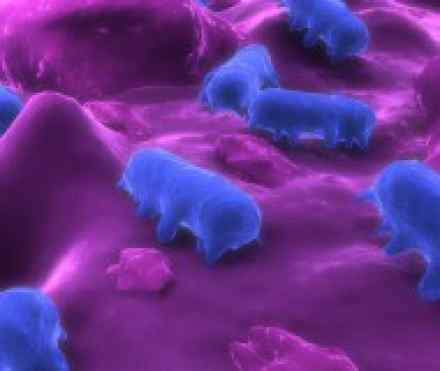
What is it?
Salmonella infection is a common bacterial disease that affects the intestinal tract. Salmonella bacteria typically live in the intestines of animals and humans and are shed through faeces. Humans become infected most frequently through contaminated water or food sources — such as poultry, meat and eggs.
Typically, people with salmonella infection develop diarrhoea, fever and abdominal cramps within 12 to 72 hours. Signs and symptoms of salmonella infection generally last four to seven days. Most healthy people recover without specific treatment.
In some cases, the diarrhea associated with salmonella infection can be extremely dehydrating and require prompt medical attention. Life-threatening complications may also develop should the infection spread beyond your intestines. Your risk of salmonella infection is higher if you travel to countries with poor sanitation.
Symptoms
There are more than 2,000 varieties of salmonella bacteria, but only about a dozen of them cause illnesses in people. Most of these illnesses can be classified as gastroenteritis, often featuring severe diarrhea. But a few varieties of salmonella bacteria result in typhoid fever, a sometimes deadly disease that is more common in developing countries.
Gastroenteritis
Salmonella-induced gastroenteritis is most often caused by eating raw or undercooked meat, poultry, eggs or egg products. The incubation period ranges from several hours to two days. Signs and symptoms may include:
Typhoid fever
Most people who develop typhoid fever in the United States have recently traveled in a country where the disease is more common. The incubation period ranges from five to 21 days following infection. Signs and symptoms may include:
- Diarrhoea or constipation
- Fever over 102 F (38.8 C)
- Slightly raised, rose-colored spots on your upper chest
- Cough
- Mental confusion
- A slowing of your heartbeat
- Enlargement of your liver and spleen
Causes
Salmonella bacteria live in the intestines of people, animals and birds. Most people are infected with salmonella by eating foods that have been contaminated by faeces. Commonly infected foods include:
- Raw meat, poultry and seafood. Faeces may get onto raw meat and poultry during the butchering process. Seafood may be contaminated if it is harvested from contaminated water.
- Raw eggs. While an egg's shell may seem to be a perfect barrier to contamination, some infected chickens produce eggs that contain salmonella before the shell is even formed. Raw eggs are used in homemade versions of mayonnaise and hollandaise sauce.
- Fruits and vegetables. Some fresh produce, particularly imported varieties, may be watered in the field or washed during processing with water contaminated with salmonella. Contamination can also occur in the kitchen, when juices from raw meat and poultry come into contact with uncooked foods, such as salads.
Many foods become contaminated when prepared by people who don't wash their hands thoroughly after using the toilet or changing a diaper. Infection also can occur if you touch something that is contaminated and then put your fingers in your mouth. This includes pets — especially birds and reptiles.
Risk factors
Factors that may increase your risk of salmonella infection include activities that may bring you into closer contact with salmonella bacteria and health problems that may weaken your resistance to infection in general.
Increased exposure
- International travel. Salmonella infection, including the varieties that cause typhoid fever, is more common in developing countries with poor sanitation.
- Owning a pet bird or reptile. Some pets, particularly birds and reptiles, can be infected with salmonella bacteria.
- Living in groups. People who live in college dorms or nursing homes might be at higher risk of infection simply because they are exposed to more people. In addition, food prepared at institutions often uses large amounts of ground meat or unshelled eggs that have been pooled from many different sources. This allows one infected egg or one pound of infected hamburger to contaminate the entire batch.
Stomach or bowel disorders
Your body has many natural defenses against salmonella infection. For example, strong stomach acid can kill many types of salmonella bacteria. But some medical problems or medications can short-circuit these natural defenses. Examples include:
- Antacids. Lowering your stomach's acidity allows more salmonella bacteria to survive.
- Inflammatory bowel disease. This disorder damages the lining of your intestines, which makes it easier for salmonella bacteria to take hold.
- Recent use of antibiotics. This can reduce the number of "good" bacteria in your intestines, which may impair your ability to fight off a salmonella infection.
Immune problems
The following medical problems or medications appear to increase your risk of contracting salmonella by impairing your immune system.
Complications
Salmonella infection itself isn't life-threatening. However, in certain people — especially children, older adults, transplant recipients and people with a weakened immune system — the development of complications can be dangerous.
Dehydration
If you can't drink enough liquids to replace the fluid you're losing from persistent diarrhea, you may become dehydrated. Warning signs include:
- Sunken eyes
- Dry mouth and tongue
- Reduced production of tears
- Decreased urine output
Bacteremia
If salmonella infection enters your bloodstream (bacteremia), it can infect tissues throughout your body, including:
- The tissues surrounding your brain and spinal cord (meningitis)
- The lining of your heart or valves (endocarditis)
- Your bones or bone marrow (osteomyelitis)
Reactive arthritis
People who have had salmonella are at higher risk of developing reactive arthritis. Also known as Reiter's syndrome, reactive arthritis typically causes:
- Eye irritation
- Painful urination
- Painful joints
Diagnosis
Salmonella infection can be detected by testing a sample of your stool. However, this test may not be very useful because most people have recovered from their symptoms by the time the test results return.
If your doctor suspects that you may have a salmonella infection in your bloodstream, he or she may suggest testing a sample of your blood for the bacteria.
References
http://www.mayoclinic.org/diseases-conditions/salmonella/basics/definition/con-20029017
http://emedicine.medscape.com/article/785774-overview
http://www.cdc.gov/salmonella/
http://www.merckmanuals.com/home/infections/bacterial-infections/salmonella-infections






